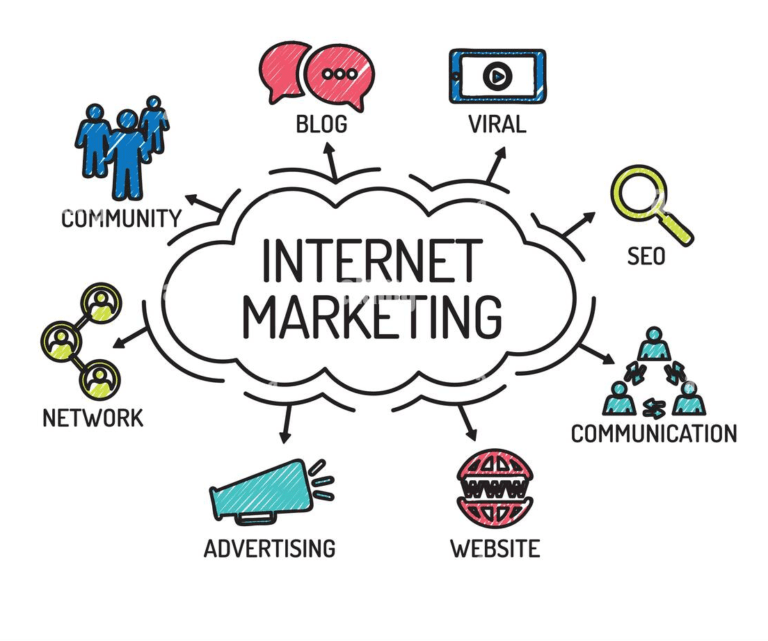Future Trends in Content Mapping: What Marketers Need to Know for 2024
Content Mapping:
Marketers need to keep ahead of the curve as the digital landscape changes by utilizing cutting-edge techniques that improve consumer engagement and increase conversions. Content mapping is one such tactic that matches content to particular phases of the buyer’s journey. As 2024 draws near, a number of new ideas that will transform personalized marketing will likely influence content mapping. We will examine these trends in this blog and offer suggestions on how marketers could modify their approaches to remain competitive.

1. AI-Driven Personalization
In content marketing, artificial intelligence (AI) remains essential, and in 2024, its impact on content mapping will only grow. Marketers will be able to produce hyper-personalized content that is based on the preferences, activities, and interactions of specific users thanks to AI-driven technologies. Artificial intelligence (AI) can forecast the kind of material that appeals to particular audience segments by evaluating enormous volumes of data, giving advertisers the opportunity to present the ideal message at the ideal moment.
Key Takeaway: In order to automate personalization and optimize content delivery based on real-time data insights, marketers should invest in AI-powered content mapping solutions.
2. Advanced Audience Segmentation
Broad audience segmentation is a thing of the past. Marketers will need to adopt sophisticated segmentation strategies in 2024 that go beyond simple psychographic and demographic data. Marketers can segment audiences based on increasingly specific criteria like behavior patterns, past purchases, and even sentiment analysis with the aid of artificial intelligence (AI) and machine learning.
Key Takeaway: Marketers should concentrate on honing their audience segmentation techniques in order to produce more pertinent and tailored content for each group in order to remain competitive.
3. Interactive and Immersive Content
By 2024, interactive content—such as surveys, interactive infographics, and quizzes—will be an essential part of content mapping. In addition to keeping readers interested, this kind of material offers insightful information that may be utilized to improve content strategy. Furthermore, immersive technologies like augmented reality (AR) and virtual reality (VR) will present fresh approaches to interacting with consumers at various points in the buyer’s journey.
Key Takeaway: To give their viewers more memorable and engaging experiences, marketers should try out interactive and immersive content formats.
4. Integration of Voice Search Optimization
It is now required to optimize material for voice search due to the increase of voice-activated devices. By 2024, voice search questions will need to be taken into consideration in content mapping since they are frequently longer and more conversational than text-based queries. Marketers will have to produce content that responds to targeted queries and conforms to voice search’s natural language.
Key Takeaway: Marketers should optimize their content for long-tail keywords and conversational phrases that are frequently used in voice search queries in order to get visitors from voice search searches.

5. Data-Driven Content Decisions
Data-driven decision-making will be even more important for content mapping in the upcoming year. To comprehend user behavior, monitor content performance, and spot holes in their content plans, marketers will need to make use of data analytics. Marketers can make sure that their content effectively maps to the buyer’s journey by leveraging analytics to inform content generation and dissemination.
Key Takeaway: To improve their content mapping strategy, marketers should give priority to data analytics solutions that offer actionable insights into audience behavior and content success.
6. Omnichannel Content Distribution
The modern customer engages with brands through a variety of channels, such as websites, email, and social media. An omnichannel strategy will be needed for content mapping in 2024 to guarantee a unified and consistent brand message across all touchpoints. It will be necessary for marketers to map content not just to the buyer’s journey but also to the particular channels that their target audience uses most frequently.
Key Takeaway: To provide customers with a smooth and customized experience on all platforms, an omnichannel content distribution strategy is necessary.
7. Real-Time Content Adaptation
The capacity to instantly adjust information will become more and more crucial as consumer behavior changes. Dynamic content that adapts to user interactions and preferences will be essential for marketers. AI and machine learning developments will be the driving forces behind this trend, giving marketers the ability to provide content that is relevant and responsive across all channels.
Key Takeaway: It is recommended that marketers investigate dynamic content solutions that provide instantaneous customization in response to user behavior and engagement indicators.
8. Ethical and Transparent Data Usage
In 2024, ethical issues around data security and privacy will become increasingly important in content mapping. Marketers must make sure that their procedures for gathering and using data are open, honest, and law-abiding. Securing consumer trust via ethical data practices will be essential to the success of content mapping.
Key Takeaway: To gain the audience’s trust, marketers should place a high priority on being transparent about their data methods and making sure that privacy laws are followed.

Conclusion
Looking ahead to 2024, we may expect technology breakthroughs and a better understanding of consumer behavior to shape the future of content mapping. Marketing professionals may develop more engaging content strategies that connect with their target audiences by embracing AI-driven personalization, sophisticated audience segmentation, interactive content, and ethical data procedures. In an increasingly competitive digital marketplace, marketers that want to increase engagement and conversions will need to stay ahead of these trends.
FAQs
Q1: What is content mapping?
In order to make sure that the correct message reaches the right audience at the right time, content mapping is the process of matching content to the different phases of the buyer’s journey.
Q2: How does AI impact content mapping?
By evaluating data and forecasting consumer preferences, artificial intelligence (AI) helps marketers to produce highly personalized content, resulting in more successful content mapping campaigns.
Q3: Why is omnichannel content distribution important?
Effective content mapping depends on omnichannel content distribution, which guarantees that customers enjoy a unified and consistent experience with a brand across all channels.
Q4: What role does data play in content mapping?
Marketers may make well-informed decisions and improve their content mapping strategies by utilizing data, which offers insights into user behavior and content performance.
Q5: How can marketers ensure ethical data usage in content mapping?
In order to ensure compliance with privacy legislation and foster audience trust, marketers should place a high priority on transparency in their data gathering and usage policies.







